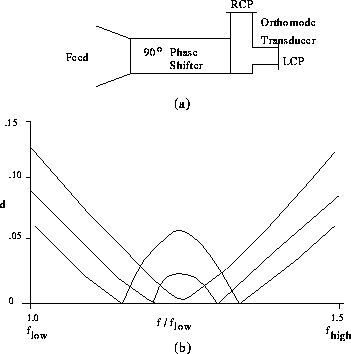
Figure 5.1: (a) Schematic diagram of circular polarizer. (b) Typical variation of the cross-polarization voltage ratio, d, across the band. Typical curves for three different phase shifter designs are shown.

Figure 5.1: (a) Schematic diagram of circular polarizer.
(b) Typical variation of the cross-polarization voltage ratio, d,
across the band. Typical curves for three different phase shifter
designs are shown.
The design of feeds and receivers which support observations over large bandwidths requires either the use of linearly polarized feeds or of circularly polarized feeds with compromises made on polarization purity. The typical cross-polarization performance of wide bandwidth circular polarizers, shown in Fig.5.1, is two or three times worse than for the current narrow bandwidth polarizers. Linearly polarized feeds would give better sensitivity and lower cross-polarization. Their main disadvantages are: the need to calibrate the relative amplitude and phase of the two polarizations accurately, the difficulty of analyzing the data when parallactic angles differ at the ends of long baselines, and the fact that their performance for total intensity measurements degrades less gracefully than for circularly polarized feeds if one polarization channel malfunctions.
The VLA now uses circularly polarized feeds. The accuracy of polarization measurements is limited not by the absolute value of the cross-polarization, but by its time variability. It would be unwise to increase the cross-polarization significantly until the cause of the time variability in the existing VLA systems is understood. The tradeoffs between using linearly and circularly polarized feeds for the new wide-band systems therefore require careful study.